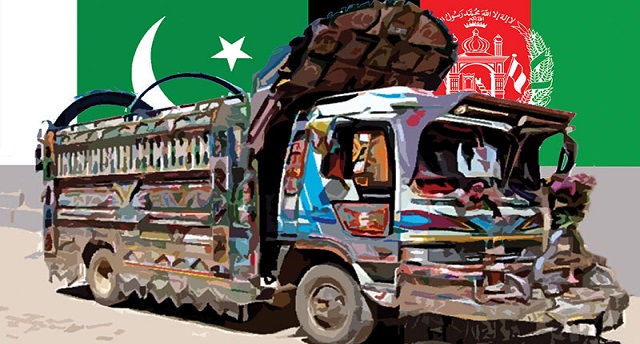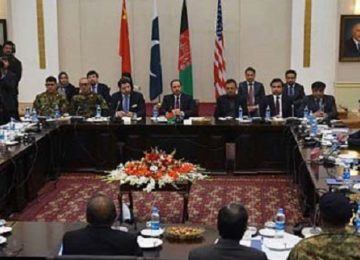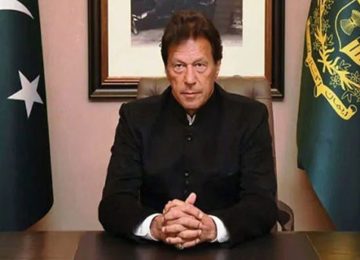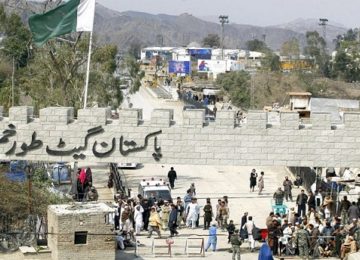– Zakirullah Niazi
Prime Minister Imran Khan’s quest for close relations with neighboring Afghanistan, especially trade ties, is a welcoming step at a time when reports suggest a decrease in bilateral trade. Officials at the Pakistan Afghanistan Chamber of Commerce and Industry insist that bilateral trade has decreased to 1.2 billion US dollars from 2.4 billion dollars in less than three years. Both countries had agreed in 2014 to increase trade to five billion dollars in five years.
In his first address to the nation, Imran Khan said Pakistan wants to boost trade with Afghanistan and to reduce the restrictions between the two countries. First let me look to the Pakistan and Afghanistan trade during the previous five years.
Pakistanis exports to Afghanistan were US$ 1998.1 million in 2013 which decreased to US$ 1722.2 in 2015 million. In 2016, it reduced to US$1369.7 million which shows a decrease of 34.75 percent which is a big number. But in 2017, it increased to US$1390 million. Similarly, imports from Afghanistan to Pakistan have been increased significantly. In 2013, total imports of Pakistan from Afghanistan were US$307.6 million in 2012 which increased to US$414.8 million in 2017 showing an increase of 34%. So what does it show a decrease of 34% in exports and an increase of 34% in imports? Simply the dependence of Pakistan on Afghanistan for the fulfilling their daily needs. (https://comtrade.un.org/data/).
A report published on 25th Feb, 2018 in times of Islamabad that Pak Afghan trade reduced from $2.7 billion to $1.2 billion. (https://timesofislamabad.com/25-Feb-2018/pak-afghan-trade-reduced-from-2-7-billion-to-1-2-billion-report ). As trade is an important portion of GDP. If a country’s exports are greater than imports, the GDP will be greater. Then a country will have more foreign reserves which can be used to finance other sectors in the economy. Exports means goods sold to another country and imports means goods bought into the country.
According to World Bank Atlas Method, if a country’s GNP per capita $1005 or less will be considered low-income countries. As Afghanistan falls in this category who’s GNP per capita is less than $1005. As long as Pakistan is concerned, Pakistan’s GNP per capita is $1006-$3955 GNP per capita which falls in lower-middle income country means developing country. So the income of people is rising. (https://blogs.worldbank.org/opendata/new-country-classifications-2016)
If we see to the western world, they don’t merge trade with politics. There is free trade among the nations. In European Nations, 28 countries have free trade. One of the trade agreements is NAFTA (North American Free Trade Agreement) on 1st of January 1994 creating of the world’s largest free trade zone. It is the free trade agreement among United States, Canada and Mexico. The purpose of NAFTA was to remove barriers to the exchange of goods and services cross-border, and to increase the competitiveness of all three signatory countries in the global marketplace. Here, also an agreement was signed namely APTTA (Afghanistan Pakistan Trade Transit Agreement) on 28th of October 2010. As Afghanistan is land lock country and hence don’t have sea access to target its goods to other countries. So in this agreement, Pakistan recognized the right of Afghanistan to freedom of access to the sea as an essential principle for expansion of its international trade. But in May 11, 2016 Pakistan closed its border (Torkham). So, how trade would be free in such a situation? If this happens, Afghanistan will absolutely target India and other Asian countries for their exports.
In NAFTA, no country closes its border even if the policy of a country is not changed totally but if one country closes its border, it will be obviously the opposition of agreement and it’s not happened yet.
Now what will be the future scenario?
So, Pakistan must change its policy because exports to China have also decreased. As China is a developing country and only need raw materials for its production. Labor and capital is also abundant in China. Pakistan only targets high-income countries which include Germany, United States, France, Japan, Kuwait and United Kingdom. As these countries are not close to the border of Pakistan and hence are far nations. So the goods reaching there will obviously increase its price. This will result decrease in demand for Pakistani goods.
So, when making a policy for trade, I suggest that Pakistan must focus on trade especially with Afghanistan.
If this statement becomes true in future, Pakistan will boost its exports to Afghanistan. If this not happens, its exports will decrease to Afghanistan and will result trade deficit as it happens in previous years.
The author Zakirullah Niazi is a student of Economics at Abdul Wali Khan University, Mardan.
Source: Daily Times








